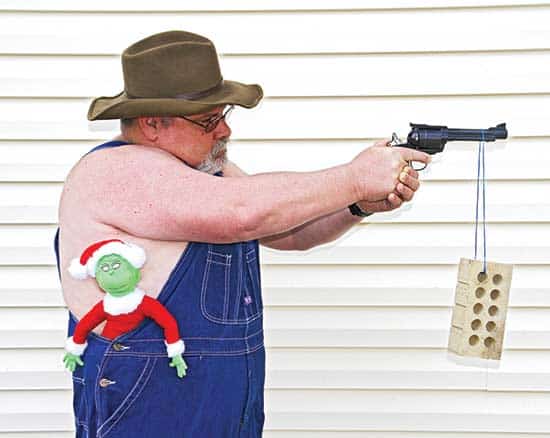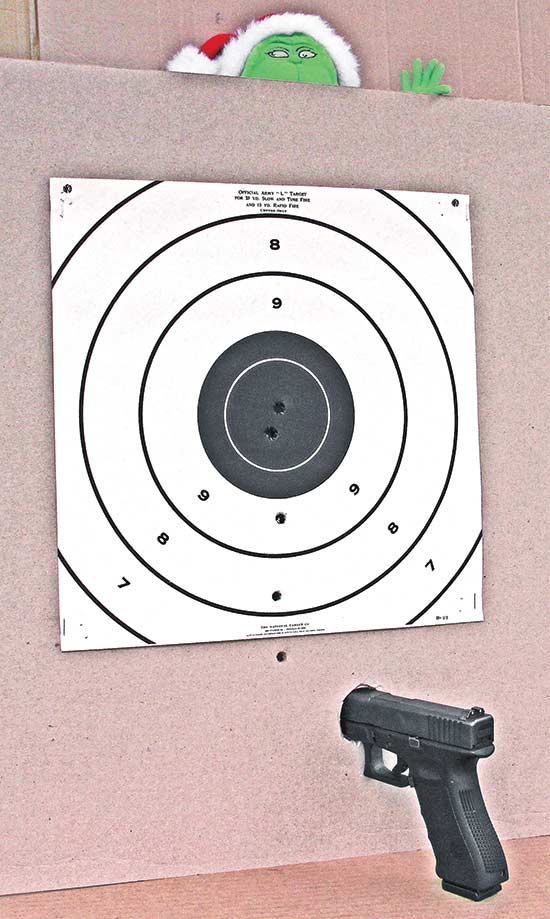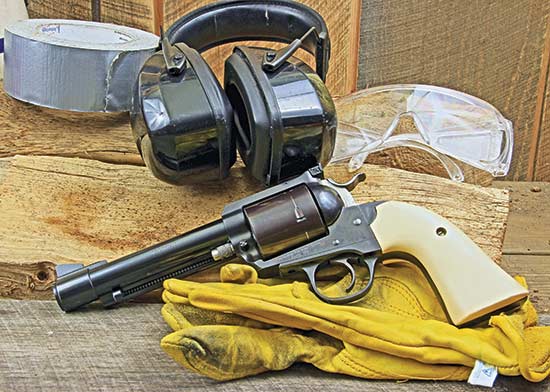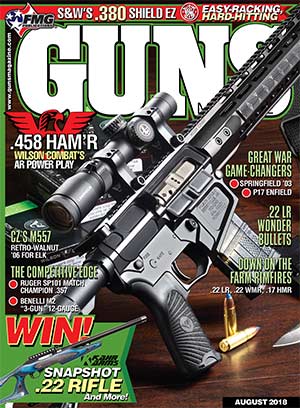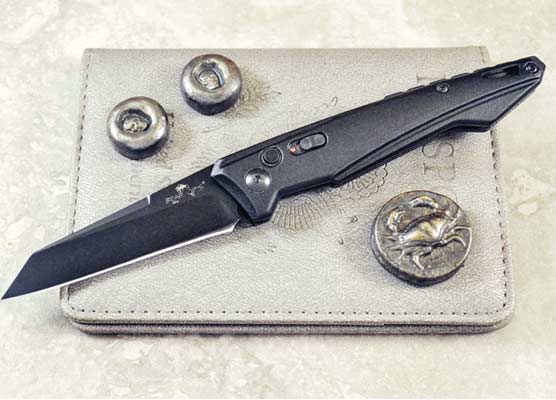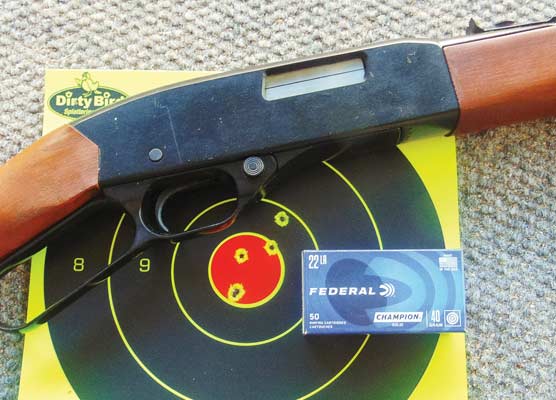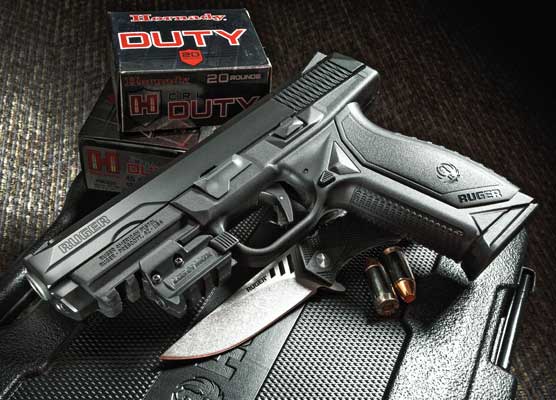You’re a Mean One, Mr. Flinch!
You’re as cuddly as a cactus, you’re as charming as an eel, Mr. Fliiiinch…!” Dr. Seuss nails it with this Christmas favorite when describing the Grinch, and the same line accurately describes the dreaded flinch. Just as the Grinch stole Christmas from all the Whos in Whoville, a flinch will rob you of accuracy.
Whether seasoned veteran, or total new-guy beginner, we’re all subject to the scourge of this marksmanship malady. He sneaks up on you unnoticed, but your target tells the tale. Groups start increasing, usually hitting lower, or missing all together, tearing up dirt clods as our subconscious starts to anticipate the recoil, muzzle blast, or loud explosion coming from the gun.
A flinch is nothing more than anticipation of an uncomfortable event. The more severe the pain, the more severe the flinch. Pain makes anticipation dreadful, but I swear, fear of pain is worse. The hard part is correcting, or blocking out the anticipation.
Can You Adjust?
There are two schools of thought on this, one mental, the other physical. I subscribe to the mental aspect of anticipation. I believe in distraction to block out the anticipation. We need to disconnect our brain by thinking about something else. Using intense concentration on your front sight and trigger pull, you can block out the anticipation. This can be drilled into a shooter by loading only two rounds in the cylinder, spinning it, and then closing the cylinder so the shooter has no idea where the rounds are. Then take the shot.
If you do indeed have a flinch when you drop the hammer on an empty chamber, you’ll find out. The muzzle of the barrel will dip, showing what happens when you anticipate the recoil. When this happens, point it out to them — or yourself! Then maintain a perfect sight picture and do it again. When the gun does finally fire on a loaded chamber, hopefully the shooter has concentrated so hard on their sight alignment they’ve fooled their brain into not anticipating the recoil. For a semi-auto, random loading of live and dummy rounds will do the same. When you pull the trigger on a “dummy” round, practice tap, tilt, rack, bang to clear the gun of a dud round. Never lose the opportunity to drill or learn a new skill!
More Shooting
The second school believes the only way to conquer a flinch is through judicious shooting! Starting with light loads and working up to higher recoil levels is the only way to correct the flinch. I understand the concept, but believe this method overlaps the first by having the shooter not think about anticipation by getting used to more and more recoil. You’re taking away the pain factor through acclimation and repetition.
Start with dry firing, to ensure the shooters have the proper skill set of pulling the trigger and maintaining proper sight alignment. Once you’re sure they can do these, start with a .22 and work your way through the caliber continuum — .38, .357, .44 Special, .44 Magnum, etc. Progressively working your way up to the heavier calibers goes almost unnoticed this way. You’ll be able to tell when they’ve reached their limit. Keep it fun to discourage bad habits. Know when to say when!
The Big Boomers
We’re talking turbo-charged .45 Colt handloads, .475, .500 Linebaugh and bigger. Start with reduced loads and work your way up. When you need to sight in for an upcoming hunt, your only choice is to suck it up, sister! But be smart! No need to shoot a full box of 50 knuckle-busting, hand-stinging, full-snort loads. No one is immune from recoil. It’ll eventually catch up to you, so be smart.
Don’t be a jerk behind the trigger, either. What I mean here is, don’t be a jerk introducing a new shooter to a big boomer! This is one of my all-time pet peeves. Some people find it “amusing” to trick a new shooter by handing them a 3″ .44 Magnum loaded with 300-gr. bullets at 1,400 fps, then innocently say, “Awww, it won’t kick at all.” When the unsuspecting shooter does let one rip, the gun usually strikes them in the face, or painfully twists out of their hand. The prankster laughs, the shooter is defeated, probably never to step foot on the range again! Why would you want to discourage someone like this? Just don’t be a jerk.
Back to basics, combined with practicing intense sight alignment and trigger control will help you overcome the flinch. Keep it fun — and get behind the gun every chance you can.
